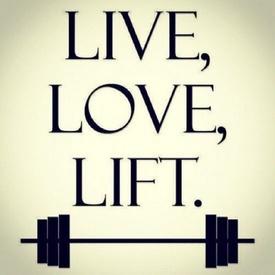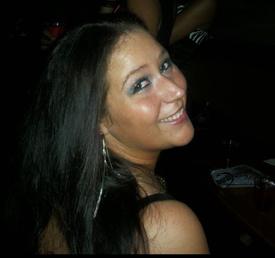the firm is kicking my butt

mrsyac2
Posts: 2,784 Member
I am so sore I did the firm hi def sculpt last night and monday and I hurt so bad its hard to walk-- Im gonna push through and workout again tonight gotta get back into shape-- I hurt so much my butt cheeks are even sore
0
Replies
-
I am so sore I did the firm hi def sculpt last night and monday and I hurt so bad its hard to walk-- Im gonna push through and workout again tonight gotta get back into shape-- I hurt so much my butt cheeks are even sore0
-
Oh I feel for you... I haven't tried that one but I did Tae Bo Bootcamp last night...made it thru 20 mins and came to the conclusion Billy was out to get me.... my legs are SO sore...they're getting a kick out of it at work today..hehe
Keep up the good work!! :happy:0 -
Here, this will help you not only understand why your muscles are sore, but what to do about it:
http://health.ninemsn.com.au/article.aspx?id=154821
What helps sore muscles?
It's great to go out and go hard in your exercise routine. Of course, sometimes the next day you're so stiff and sore, you can hardly move. Is it really a case of "no pain, no gain"?
What's Good For You tests six different ways of beating delayed onset muscle soreness — the pain that hits you the day after a tough workout.
Watch video
The test
Why do we feel so bad after exercising, when we're told it's supposed to be good for us?
When we push ourselves physically, fibres in the muscles tear. The body's defence mechanism sends fluid into these areas, causing swelling. The swelling triggers pain receptors and you wake up stiff and sore.
Physiologist Dr Shona Halson works with top athletes at the Australian Institute of Sport in Canberra and says this is a good pain.
"Generally speaking, those muscle tears are a good thing," Dr Halson says. "What happens then is the muscle repairs itself and it repairs itself stronger. So you do get a really strong protective effect from doing a single bout of damaging exercise. Normally, you're protected for about six months."
James Brabon is the brains behind Bootcamp, a military style exercise program. He's going to give his class the mother of all workouts on a Sydney beach, to make sure they're good and sore tomorrow.
These six recruits will then each try a different method of beating the aches.
"It's going to shock their body a little bit," James says. "But that's what you need to do to really make them certain that they're going to get the delayed onset muscle soreness. And we know they've been training at a high intensity prior to this as well."
Method one to beat muscle ache starts before the exercise. Craig's been given compression garments and he'll wear them during and after training for as long as possible.
After the recruits make it through their harsh workout, they are given their muscle ache solutions.
Will's method, the second after Craig's compression garments, is to do nothing.
The third method involves heat and anti-inflammatory creams. Noreen is given two creams, a heat gel and an anti-inflammatory.
The fourth method is massage. Leanne will have a full body massage.
Method five is more exercise and stretching — Pria has to do more jogging tomorrow and a lot of stretching.
The last method is cold water. Wayne is sent for a cold swim in the surf, which is a bracing 17 degrees Celsius, to simulate the ice bath that some sports players have.
The results
Delayed muscle ache peaks anywhere between 24 and 48 hours after exercise.
At the halfway stage, Craig's taken his mission so seriously he's even slept in his compression skins.
"Using these has definitely helped," he says. "It feels like the blood has had the chance to flow the entire time."
"Twenty-four hours after, I still feel a little bit tight but probably not as bad as I usually do," says Wayne of his cold water therapy.
"I've done some walking around that I couldn't help, so my legs aren't as sore as I thought they would be, but the rest is fairly tight," reports Will, who didn't have any treatment.
Craig rates his pain level out of 10 as a five, as does Wayne. Will gives his pain a six.
Noreen has been busy rubbing in an anti-inflammatory cream on one side of her body and a heat gel on the other.
"Applying the heat cream makes me feel hot all over,"' she says. "In certain parts it gets quite stingy and quite uncomfortable. She rates her pain as a three.
Pria's been doing some gentle cardio and step exercises and says her pain level is a five.
"Initially when you get up you feel your muscles in bed going a little bit crazy but once you're up and get moving it gets the blood flowing, I think it's a good thing," she says.
After being blissed out on the massage table, Leanne says, "I could feel the muscles being massaged and it's helped. I feel relieved."
Leanne rates her pain as a five out of 10.
The girls are reporting lower pain levels than the boys, which either means they're fitter or braver.
Forty-eight hours later, the group do a series of exercises to see how much they hurt.
Will was told to do absolutely nothing and he's the biggest sufferer in the group. His pain rating has increased from a six to an eight — the highest of the group.
Craig's pain level increased from five after 24 hours to six after 48 but he felt it would have been an eight without the compression garments.
Wayne's icy dip left him at five after 24 hours and he also went up to six. He too felt the pain would have been worse without his treatment.
Noreen found no difference between the anti-inflammatory cream and the heat gel. Her pain rating stayed the same but was pretty low — three.
Pria's gentle exercise definitely helped. She went from a five to a three after 48 hours.
Leanne's massage was the measure that came out on top. Massage stretches the muscle and eases out toxins. Leanne's had her pain rating go from five to two.
Conclusion
In our test, massage was best, exercise and compression garments helped and so did the soothing creams. Resting was a definite no-no, with Will suffering the most.
At the Australian Institute of Sport Dr Shona Halson agrees that doing something after a big workout is better than nothing. She's a big fan of cold water therapy for elite athletes but there are simpler methods for us mere mortals.
"For the average person the most important things are nutrition and getting a good night's sleep, they're probably the two most important things," Dr Halson says. "The other thing they could do is go to the beach and do some walking through the water, especially if it's cold water; or go to the pool and do some kind of pool exercise as well."
It seems the biggest message is that once we've got ourselves off the couch, we have to stay off it or we'll suffer a lot more pain for our gain.
Fast facts
Men have the highest tolerance for pain. Studies have found women report feeling more pain, more often, although scientists don't know whether that's down to physical differences or the fact that women can communicate their pain better.
After a tough workout people often blame lactic acid for their pain. When you feel the burn, that's lactic acid. It's produced when you're exercising so hard your blood can't deliver oxygen to the muscles quickly enough, but it's flushed out of your system within an hour. Muscle tears, not lactic acid, cause soreness the day after exercise.0 -
My coworkers are cracking up-- I will be fine though- NO PAIN NO GAIN-- Its all about the end result I will go home my husband will stretch my legs out (he used to wrestle now is in the army) then I will workout again and complain more tomorrow about being sore lol--0
This discussion has been closed.
Categories
- All Categories
- 1.4M Health, Wellness and Goals
- 394.1K Introduce Yourself
- 43.9K Getting Started
- 260.4K Health and Weight Loss
- 176.1K Food and Nutrition
- 47.5K Recipes
- 232.6K Fitness and Exercise
- 437 Sleep, Mindfulness and Overall Wellness
- 6.5K Goal: Maintaining Weight
- 8.6K Goal: Gaining Weight and Body Building
- 153.1K Motivation and Support
- 8.1K Challenges
- 1.3K Debate Club
- 96.4K Chit-Chat
- 2.5K Fun and Games
- 3.9K MyFitnessPal Information
- 15 News and Announcements
- 1.2K Feature Suggestions and Ideas
- 2.7K MyFitnessPal Tech Support Questions

